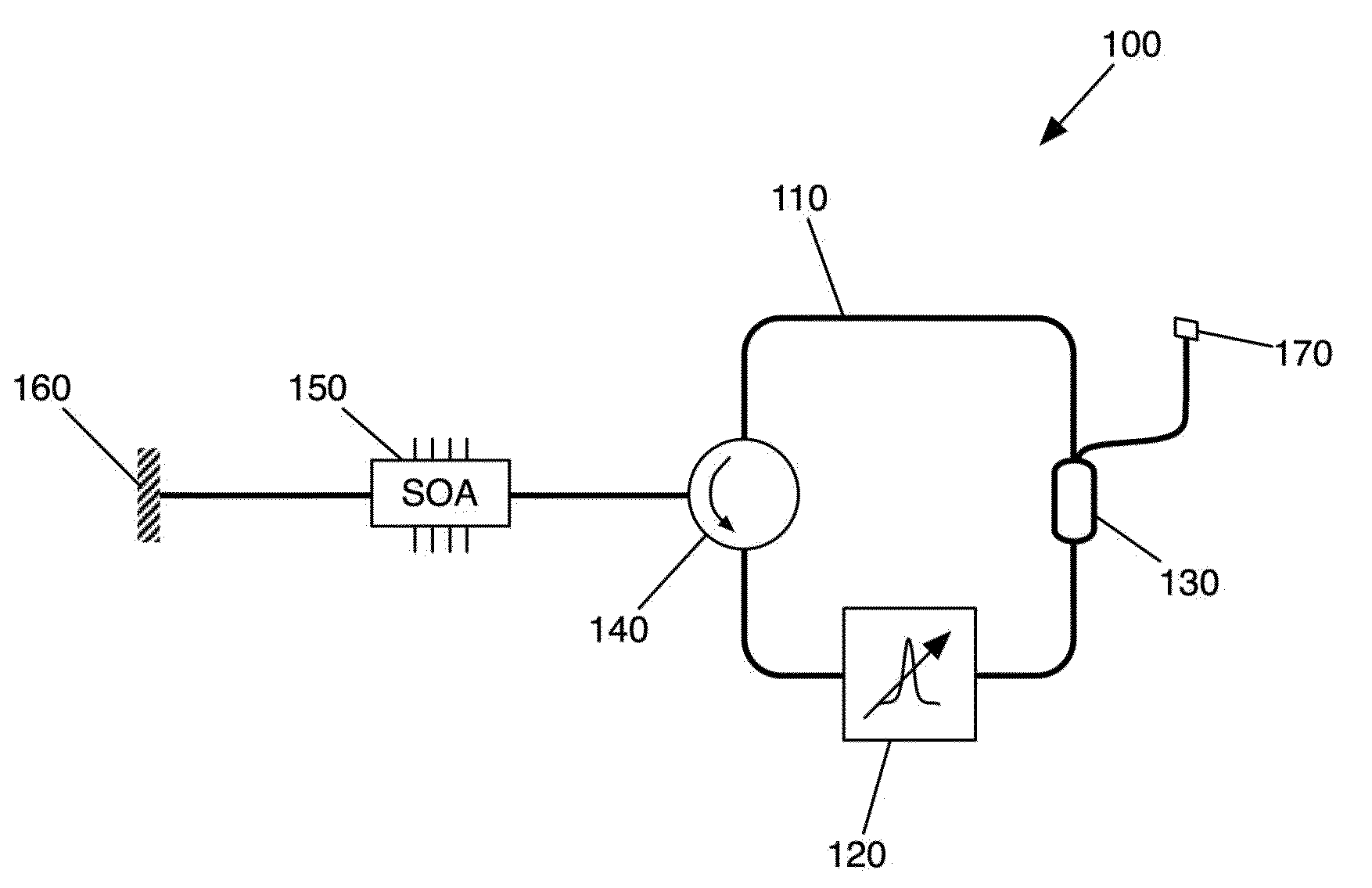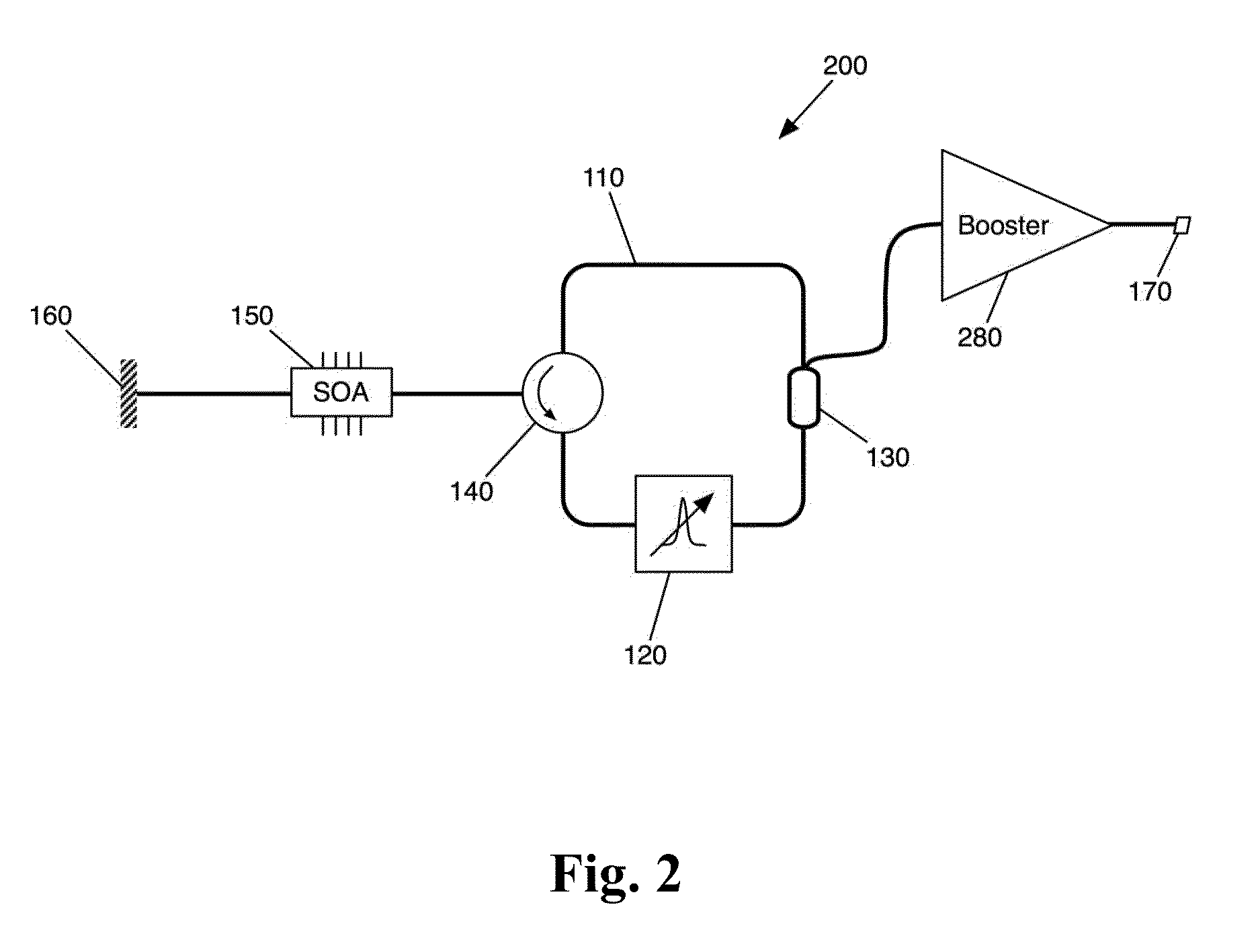Swept fiber laser source for optical coherence tomography
a fiber optic laser and optical coherence tomography technology, applied in the direction of laser details, wave amplification devices, electrical devices, etc., can solve the problems of limited depth penetration beyond the retinal pigment epithelium (rpe), water absorption, and other issues, to achieve the effect of low threshold pump power, large tuning range, and easy to reach deep saturation
- Summary
- Abstract
- Description
- Claims
- Application Information
AI Technical Summary
Benefits of technology
Problems solved by technology
Method used
Image
Examples
Embodiment Construction
[0020]Further features and advantages of the invention, as well as the structure and operation of various embodiments of the invention, are described in detail below with reference to the accompanying FIGS. 1-7, wherein like reference numerals refer to like elements. Although the fiber source is described in the context of optical coherence tomography, one of ordinary skill in the art readily appreciates that the present invention can be implemented in any type of system where it is desired to implement a swept fiber laser source with a wavelength emission centered near 1060 nm, for example, optical sensing (strain and temperature).
[0021]FIG. 1 illustrates a swept fiber laser source 100 according to an embodiment of the invention. The swept fiber laser source 100 comprises a semiconductor optical amplifier (SOA) device 150 spliced at one fiber end to a common-port of a polarization-maintaining (PM) optical circulator 140. The other fiber end of the SOA device 150 is spliced to a PM ...
PUM
 Login to View More
Login to View More Abstract
Description
Claims
Application Information
 Login to View More
Login to View More - R&D
- Intellectual Property
- Life Sciences
- Materials
- Tech Scout
- Unparalleled Data Quality
- Higher Quality Content
- 60% Fewer Hallucinations
Browse by: Latest US Patents, China's latest patents, Technical Efficacy Thesaurus, Application Domain, Technology Topic, Popular Technical Reports.
© 2025 PatSnap. All rights reserved.Legal|Privacy policy|Modern Slavery Act Transparency Statement|Sitemap|About US| Contact US: help@patsnap.com



